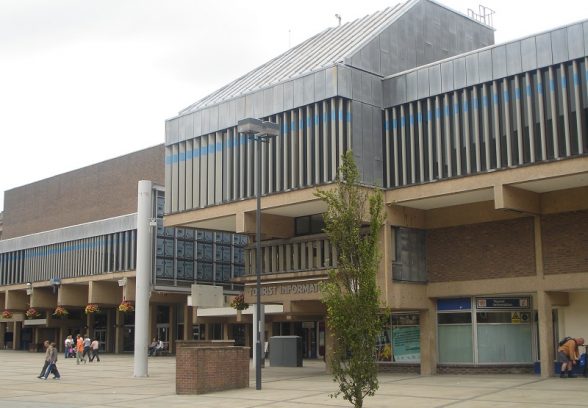This website uses cookies
This website uses cookies to enable it to function properly and to analyse how the website is used. Please click 'Close' to accept and continue using the website.



We are dismayed that plans to demolish the Derby Assembly Rooms have come a step closer and are urging members to sign an on-line petition to help save the 1970s Brutalist building.
The petition has been launched by architect Robert Evans, founding director of Derbyshire practice Evans Vettori, and has so far attracted more than 270 signatures.
Robert said: “It is inconceivable that the building cannot be modified, whilst retaining its architectural qualities, to continue to fulfil its role as an entertainment venue. It would be simply disgraceful for this distinguished building to be destroyed. It would be yet another nail in the coffin of the city’s architectural heritage.”
C20 Director Catherine Croft says “This is a very well designed building which should be listed, it’s nationally important and has strong local support from many who can see its great potential. It would be an enormous cultural loss to Derby if it was demolished.”
The C20 Society has previously voiced strong objections to demolition which were reinforced this month in a letter to the council. C20 Society Director Catherine Croft wrote: “We were disappointed that it was not considered worthy of Grade II listing and that a Certificate of Immunity was issued. We still maintain that the building is of sufficient architectural and historic interest for Grade II listing and hope that like many other buildings initially considered “too young” for listing this assessment will be reversed when the COI expires.
“In addition to the heritage merits of the building there are strong environmental arguments in favour of retention and reuse. It would be an unnecessary and damaging waste of embodied energy to demolish.
“Post-war architecture is increasingly appreciated by a wider public, and the opportunity for modern buildings to lead the regeneration and re-branding of urban centres is demonstrated by projects such the recent renovation of Patrick Gwynne’s 1967 extension to York Theatre Royal by De Matos Ryan. The continuing success of schemes such as London’s South Bank have highlighted the popularity and importance of post-war performance venues in the UK.”
Historic England has also voiced strong objections saying that demolition would ‘erode’ the character of the city’s medieval Market Place. The building has stood unused since March 2014 following a fire in the adjacent car park.
The Assembly Rooms were built in 1971-6 to designs by Casson, Conder & Partners, in association with the Borough Architect’s Department. Sir Hugh Casson was a founding partner of the practice, and a major figure in post-war British architecture. He is perhaps best known for his role as the Director of Architecture for the Festival of Britain. Casson, Conder & Partners specialised in the design of adaptable auditorium spaces and venues. The practice is widely celebrated for their university buildings, many of which are now listed.
The Derby Assembly Rooms are on a larger scale than these earlier academic projects, but they share a similar ethos and aesthetic language. They are constructed on an exposed concrete frame, with large bay windows on the ground floor and an enclosed, cantilevered walkway above ground-level. These walkways form a striking feature as they are clearly expressed through the external structure. The staggered levels and bold sculptural form draw people in from the market place. The Assembly Rooms contain two concert halls, and were intended as the centre of an unrealised grand civic scheme in Derby city centre. This civic character is legible through its form and the integration of a range spaces for a variety of functions.

Become a C20 member today and help save our modern design heritage.